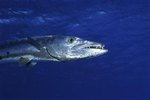
Starfish and sea anemones are two invertebrates that can work in a saltwater aquarium. However, care must be taken that compatible sea stars and anemones are kept together. Even though they seem peaceful and often stationary, both the starfish and the sea anemone are predators.
Starfish
Starfish are animals that belong to the phylum echinoderms, and the class Asteroidea. Marine biologists are trying to get the term "sea stars" to catch on instead, because starfish are not fish. Most varieties have five arms, but some species have more, sometimes more than 20. Starfish are found in a wide variety of habitats in all oceans, but never in fresh water. They are also known for their regenerative abilities; many species can regrow arms, and a few can even regrow a whole body from a severed limb.
Sea Anemones
Sea anemones belong to the same phylum as jellyfish and coral, the cnidarians. Almost all members of this phylum sting to one degree or another. However, sea anemones are known for their symbiotic relationship with clown fish, which can hide among the stinging tentacles for safety from predators. Many anemones also have a symbiotic relationship with zooxanthellae, an algae that lives inside their cells and produces nutrients in exchange for carbon dioxide.
Anemone Stings
An anemone's sting is the first thing people worry about when they consider tankmates, and for good reason. You should always wear gloves when handling anemones. Even "safe" species can cause dangerous reactions in susceptible people, and the only way you'll find out is if you're careless with one. However, anemones are generally most dangerous toward animals that can't move, or move very slowly, like corals and other anemones. Generally a starfish's almost shell-like skin and mobility allow them to get away with very minor injuries.
Predatory Starfish
Oddly, starfish can present more danger for anemones than vice versa. Many species of starfish are voracious, if slow-moving, predators. The crown of thorns starfish is a great example. These predators devastate coral reefs by eating coral and anemones. The chocolate chip starfish is more common in aquariums, and just as dangerous to stationary invertebrates like anemones. If you want something safer, you should look for blue sea stars (Linckia laevigata), red sea stars (Fromia elegans), orange sea stars (Fromia monilis) and red-knobbed sea stars (Protoreaster lincki), which tend to be reef-safe.
References
- National Geographic: Starfish (Sea Stars) Asteroidea
- Fish Channel: Choosing and Caring For Sea Anemones, Scott W. Michael
- Aquarium Invertebrates: Tube Anemones, Robert Toonen, Ph.D.
- Shed Aquarium: Crown of Thorns Sea Star Scientific Name: Acanthaster planci
- Fish Channel: Aquarium Sea Stars, Philip A. Purser
Photo Credits
-
Jupiterimages/Photos.com/Getty Images




